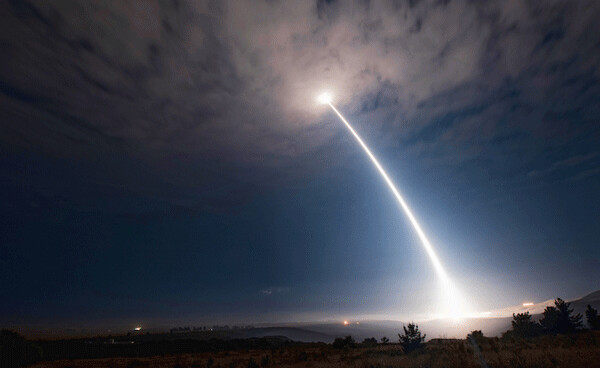Nobel Peace Prize Goes to Abolitionists While US Conducts Nuclear War Games

On October 6, the 2017 Nobel Peace Prize was awarded to the International Campaign to Abolish Nuclear Weapons (ICAN) for its successful effort to establish a global treaty that bans all aspects of nuclear weapons. Peace and disarmament groups around the world celebrated the Peace Prize announcement and congratulated ICAN for its landmark treaty accomplishment.
By employing grassroots organizing and ordinary citizen diplomacy, the ICAN coalition managed to permanently stigmatize and eventually eliminate the most destructive weapons ever made. Nukewatch, established in 1979, is proud to be one of ICAN’s 468 partner organizations from 100 countries. In a statement ICAN called the prize “a tribute to the tireless efforts of many millions of campaigners and concerned citizens worldwide who, ever since the dawn of the atomic age, have loudly protested nuclear weapons, insisting that they can serve no legitimate purpose and must be forever banished from the face of our earth.”
The new Ban Treaty prohibits developing, testing, producing, manufacturing, possessing, stockpiling and deploying nuclear weapons, transferring or receiving them from others, using or threatening to use nuclear weapons, allowing any stationing or deployment of nuclear weapons on national territories of signatories, and assisting, encouraging, or inducing any of these prohibited acts. The Treaty requires each signatory state to develop “legal, administrative and other measures, including the imposition of penal sanctions, to prevent and suppress” the prohibited activities.
The new treaty was concluded on July 7 when 122 United Nations states voted in favor of its adoption. Since Sept. 20, 53 individual heads of state have “signed” the treaty, the first step in a government’s process of ratification which is decided by individual national parliaments. It will enter in force 90 days after at least 50 countries have ratified it.
The United States, the most powerful opponent of the Ban, called the treaty negotiations “unrealistic” and led a boycott, even though the talks are among the explicit mandates within the Nuclear Nonproliferation Treaty, ratified by the United States in 1970.
US Fearmongering and Nuclear War Games Distract
Drawing attention away from the Treaty Ban and the abolitionist Nobel Prize announcement, the United States has for months been issuing wildly exaggerated claims about the threats posed by North Korea (which may have 20 nuclear warheads but no workable rockets for them) and Iran (which has no nuclear weapons).
At least the rest of the world is aware that US conventional weapons were sufficient to see the Pentagon take over two whole counties, nuclear weapons being superfluous. They are additionally and increasingly useless in US terror wars since nuclear weapons embody but never deter terrorism. A case in point: From October 16 to the 20th the United States and some NATO partners conducted what they called their Steadfast Noon nuclear strike exercises. The annual war “game” is a NATO practice of nuclear weapons use with jet fighter bombers and the B61 H-bombs the US deploys in Europe.
The Washington Post reported Oct. 16 that one NATO official said the war game involves a “fictional scenario,” and the paper noted that the US keeps about 150-180 B61 nuclear weapons at six bases in five European countries. As Joseph Trevithick wrote for TheDrive online, “The bombs are technically ‘tactical’ nuclear weapons, though experts and advocates routinely debate the validity of this term and whether any nuclear weapon can be seen as a limited, tactical tool.” The B61 is an unguided gravity bomb that has an explosive force of 340 kilotons (27 times the force of the Hiroshima bomb that killed 170,000 people).
This month’s nuclear war practice took place at two locations: the Kleine Brogel Air Base in Belgium and Büchel Air Base in Germany, both of which host about 20 of the B61s. Belgian and German pilots train to use these H-bombs in the event of a Presidential order to go nuclear.
The Peace Prize, which will be presented December 10 in Oslo, increases the stigmatization of nuclear weapons, NATO’s ghastly preparations for using them, and the nuclear-armed states’ archaic rationalizations. All three need to be publicized and acknowledged before another accident or miscalculation (think World War I) kills millions